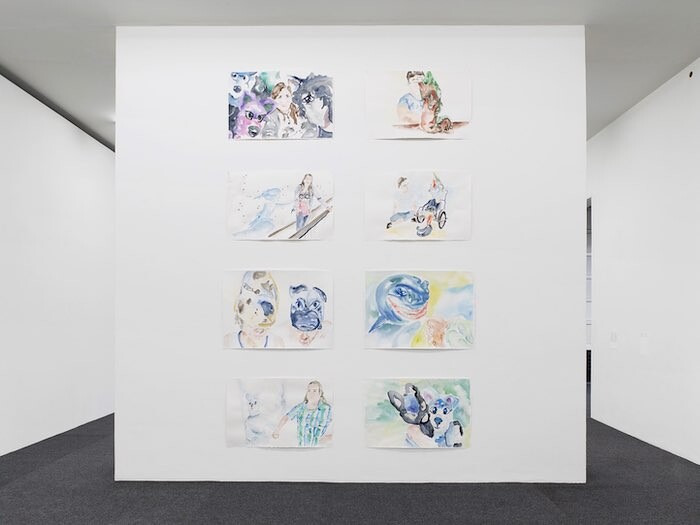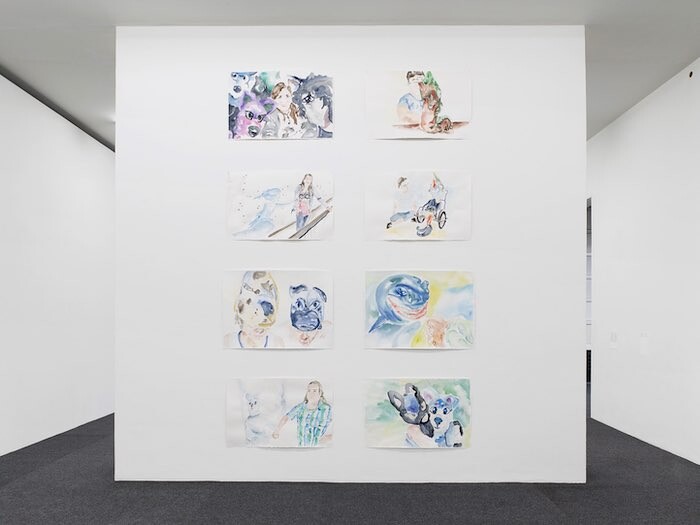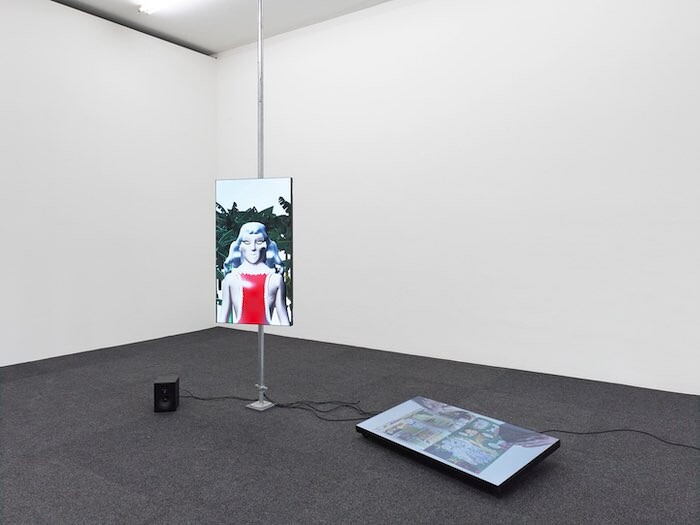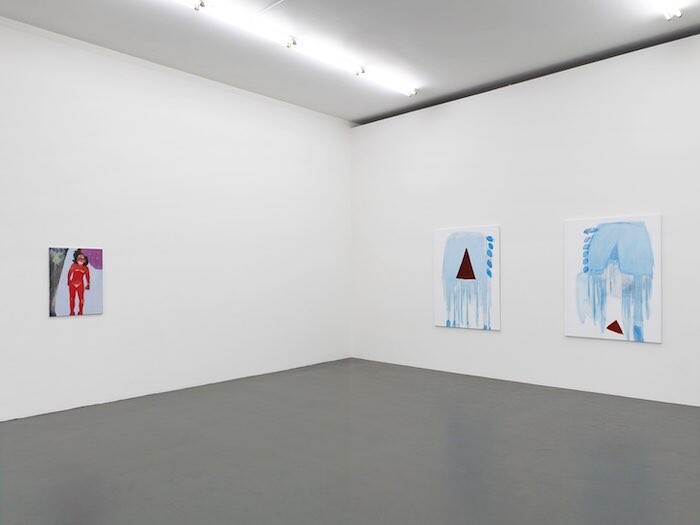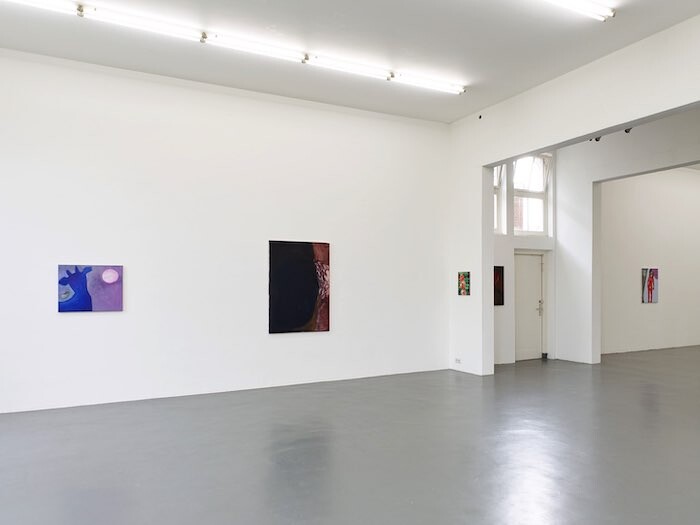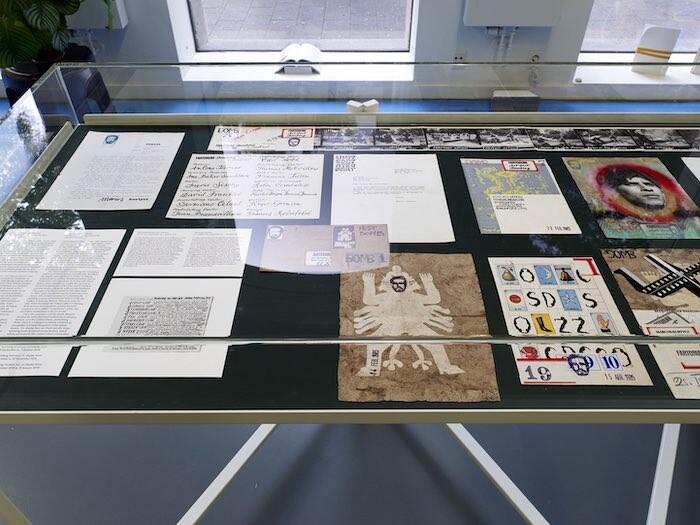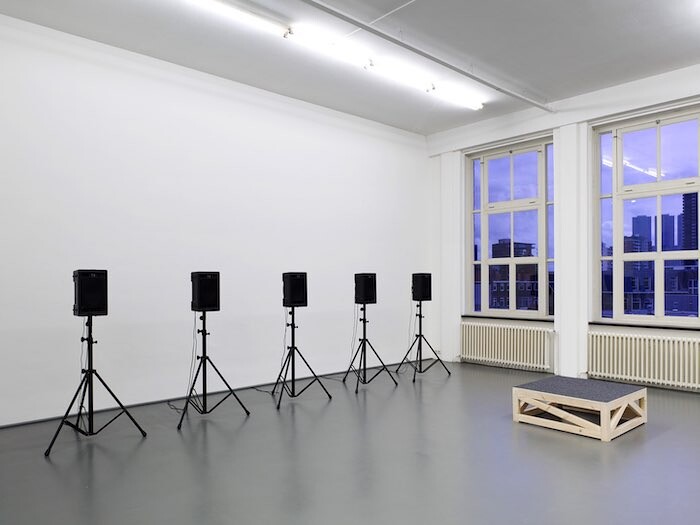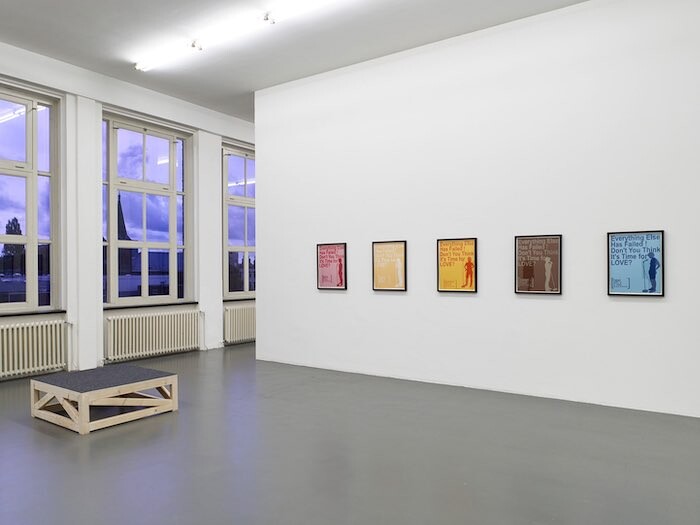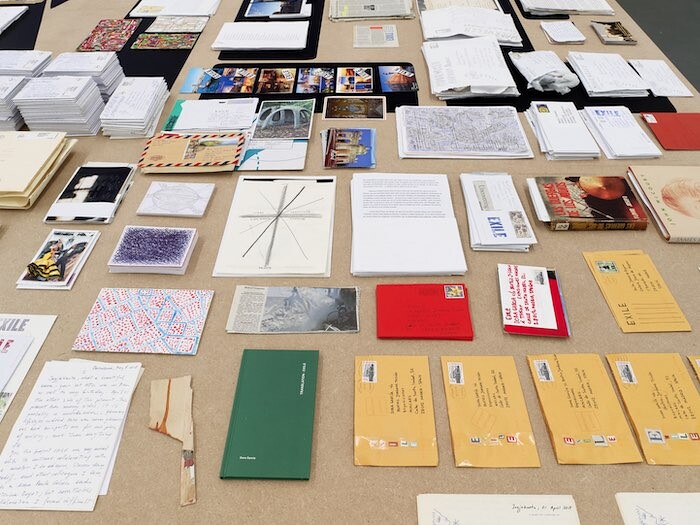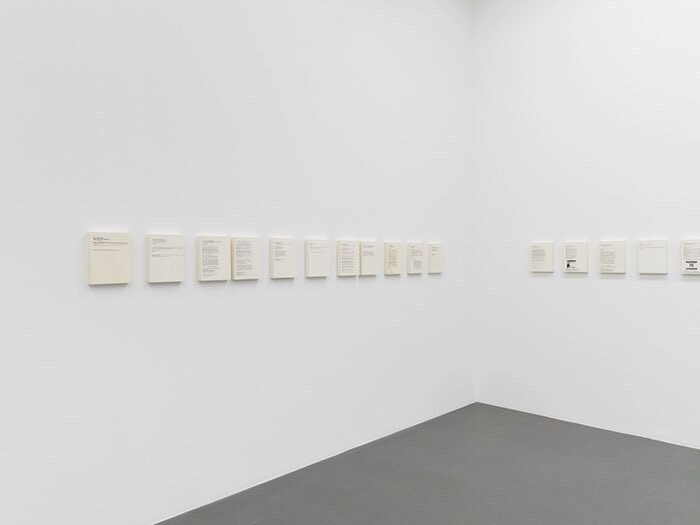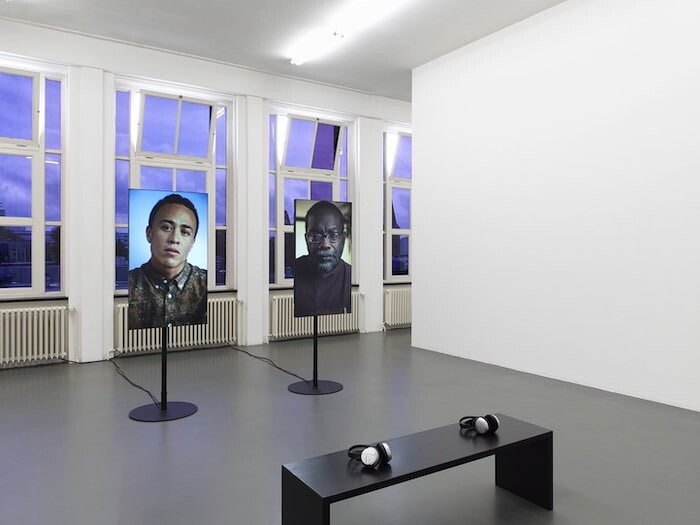In January 2018, Sofía Hernández Chong Cuy took over as director of Witte de With Center for Contemporary Art, replacing Defne Ayas who, like me, started working in the Dutch “second city” in 2012. Witte de With’s directors are initially hired for three years and their contract can be renewed once for a finite six years. This sets a tempo and creates momentum for the institution and its publics, which anticipate structural transitions and shifts in direction and content that impact the institution’s identity and legacy.
You might have noticed that Witte de With has been the focus of attention lately. The contemporary art center celebrated its 25th anniversary in 2016, during Ayas’s tenure, and she developed a number of exhibitions, publications, and public programs around institutional histories and heritage. These include the fascinating “Rotterdam Cultural Histories” displays Witte de With still co-produces with the art center TENT, which is housed in the same building on Witte de Withstraat, and whose local mission is to support artists based in the city. In addition, Ayas invited Rotterdam-based artist-duo Bik van der Pol—Liesbeth Bik and Jos van der Pol—to work closely with Witte de With’s staff on the 2016 exhibition “WERE IT AS IF,” an impressively eclectic show that coalesced from immersion in the Witte de With archive of documents, objects, furnishings, and ephemera. In the accompanying publication, Ayas writes that Bik van der Pol’s “WERE IT AS IF” unearthed, displayed, and analyzed Witte de With’s “anatomy.”1
The skeletal timeline Bik van der Pol included in the publication commences with the year 1871: “The Witte de Withstraat is named after a Dutch naval officer Admiral Witte Corneliszoon de With.” A year later, this anatomical detail emerged as the beating heart of a painful and necessary call for recognition of an overlooked aspect of Witte de With’s history. A group of cultural workers—some of whom were involved in Wendelien van Oldenborgh’s “Cinema Olanda: Platform,” held at the art center in 2017—wrote an open letter: “What does it mean for a white institution to do ‘critical work’ under the moniker Witte de With, the name of a high-ranking colonial naval officer who worked for both the Dutch West India Company and the Dutch East India Company (VOC and WIC)? What does it mean to engage in ‘critical reflection on timely issues’ (from Witte de With website) under that name—a name that conjures up a history of terror? What does it mean to validate, market, and circulate such a name?”2
Witte de With, led by Ayas, acknowledged the problematic implications of operating under this name and organized public conversations and debates during the run of “Cinema Olanda: Platform” and beyond. TENT and Witte de With mounted a “Rotterdam Cultural Histories” display devoted to Witte de With and the controversy. An additional set of explanatory timelines sketch a chronological narrative on Witte de With’s website.3 In September 2017, the institution’s supervisory board unanimously voted that it should change its name. This prompted more—often heated—discussion around Dutch colonialism in the city, almost half the population of which is of non-Dutch origin. A few weeks ago, just over a year after the board’s decision, the local press announced that the Rotterdam city council would not change colonial street names such as Witte de Withstraat.4
My reading of Hernández Chong Cuy’s program for Witte de With is necessarily influenced by an awareness of this recent past, encounters with various colonial histories repressed and revealed, as well as future perspectives for an institutional change in name. However, between the past and the future there is also a meantime. The opening fall exhibitions are Hernández Chong Cuy’s second act in Witte de With’s new program, which she launched in May. Concise descriptive language is used in exhibition communication and wall texts. The respective missions of Witte de With and TENT are differentiated for the public when they enter the building. The Witte de With director’s office is now visibly located on the shop floor between the galleries, which are designated for the exhibitions they will contain: two for solo exhibitions on the first floor, and an entire space for group exhibitions on the second. Hernández Chong Cuy had the glass-fronted, street-side gallery space re-designed and re-allocated as Untitled. She commissioned Federico Herrero to make the mural Open Envelope (2018), in which soft blocks of bright color flow out from the wall joints and up from the baseboards, and brought in furniture by Studio Manuel Raeder’s Muebles Manuel. Most importantly, Untitled is accessible to the public free of charge. It hosts curated presentations in vitrines, a program-related bookshop, and weekly public gatherings and events that promote collective learning.
Hernández Chong Cuy’s curatorial sensibility is of course felt in the selection of artists, as well as the thematic threads and topics we encounter when we visit. The opening fall exhibitions include solo presentations of work by Ana Maria Millan (curated by Hernández Chong Cuy and Witte de With’s associate curator Rosa de Graaf) and Rosalind Nashashibi (guest curated by Raimundas Malašauskas), as well as two vitrine presentations: one documenting a workshop New York artists John Ahearn and Rigoberto Torres held with Rotterdammers in 1991, during the Witte de With exhibition “South Bronx Hall of Fame,” and the other, curated by Mauricio Marcín, presenting Polish artist Marcos Kurtycz’s mail art.
“A group exhibition with work by Dora García, Sharon Hayes, Emily Jacir, Mahmoud Khaled, Carlos Motta, Wu Tsang, Akram Zaatari, and Quinn Latimer,” which Hernández Chong Cuy curated with Witte de With’s curator Samuel Saelemakers, is devoted to expression in letter writing, and arrives on the scene like a well-timed missive. It can be seen as a kind of “open letter” in itself, one that expands our understanding of literary epistolary forms. These are historically characterized by huge stylistic diversity that nonetheless shares the aim to mediate between senders and receivers, temporal distance and proximity, physical absence and presence, secrets and their revelation. “A group exhibition” updates the history of the genre and magnifies the potential of the form by illustrating that the epistolary, in the visual arts, operates across a wide variety of analogue and digital media.
Since I’ve been waiting for the mailman to deliver the letter Witte de With commissioned from poet and critic Quinn Latimer, and which will be published in pamphlet form during the course of the show, “A group exhibition” has made me realize how much I love to re-encounter works I’ve seen before but in new configurations, and how rare it is that my experience of them is effectively curated. It has a welcome didactic subplot, most evident in the annotated “wallpaper” that guides you through the exhibition via a pictorial history of epistolary forms, from Vermeer’s paintings to the television series based on Chris Kraus’s novel I Love Dick (2017). Each of the works is contained in its own dedicated space, which paradoxically reinforces connections as you navigate the gallery.
“A group exhibition” also interrogates your positions as “viewer” and “reader”: the viewer in you takes in the bigger picture, while the reader attends to details. You are placed in the position of a mobile witness as you move from one of Emily Jacir’s Inbox (2014–15) paintings to the next. These small paintings of emails, which Jacir received from Palestinian exiles, resonate with Mahmoud Khaled’s Do You Have Work Tomorrow? (2013), a framed black-and-white photo series of screenshots of Grindr conversations on a smart phone. Radically different in content, the chromatic sincerity of Jacir’s black “ink” painted on the white canvas “page” of a reproduced email contrasts with the technological anachronism of Khaled’s dull black and white images of usually seductively colored digital screens. You identify with the reader as receiver when surveying tables full of voluminous correspondence, then opening and reading the individual letters Dora García is collecting from invited letter-writers for her project “EXILE” (2012–ongoing). Among the stacks of postcards, books, and multi-colored envelopes, stamped with postage and the word “EXILE,” you’ll find mail art from the Amsterdam-based poet and artist Aldo Piromalli—the inspiration for García’s project.
Language and communication are central to epistolarity, which is not limited to the exchange of printed words. Sharon Hayes’s audio installation Everything Else Has Failed! Don’t You Think It’s Time for Love? (2007), with its row of speakers facing posters on which these words appear, alludes to the conditions of her original New York City street corner performance, from the same year, in which she entreats a dear lover in a voice that rings of protest. Wu Tsang’s two-channel video installation Miss Communication and Mr:Re (2014) features video portraits of Tsang and poet and theorist Fred Moten, captured in two vertical HD monitors placed next to each other. Donning headphones, you hear the two speaking through the interface of recorded voicemail messages, reinforcing a sensation of missed calls, absent bodies, and echoes of the somewhat plaintive, performative attempts to communicate already encountered in Hayes’s work.
Love, friendship, and sexual desire are omnipresent themes in “A group exhibition.” Akram Zaatari’s film Tomorrow Everything Will Be Alright (2010) uses the conceit of the close-up shot of a typewriter clacking out black and red printed dialogue to divulge a story of longing between two former lovers. Zaatari’s typed dialogue reveals the textures of emotion, soft wishes versus hard-on wants, and the heightened anticipation of re-encountering a lost love. The final sequence is of a car driving through the city toward a beach so the two men can meet and capture the elusive green ray at sunset, the image of the horizon time-stamped 1991. Carlos Motta’s video رغبات/ Deseos (2015) narrates an imaginary correspondence between two women: Nour, who lived in Beirut during the late Ottoman Empire, and Martina, who was based in Colombia during the colonial period of the nineteenth century. While the camera pans and lingers on landscapes and architecture, Nour and Martina share their stories of exposure, social ostracization, and punishment for transgressing “natural” understandings of gender and sexuality. (Martina is a hermaphrodite, Nour is a lesbian forced to marry her lover’s brother.) The love that emerges between Nour and Martina is audible in the sound of their voices, regardless of the fact they speak different languages. That love exists in a highly legislated, multi-dimensional time and space, but the protagonists are not alone—their solidarity feels real. The world presented in “A group exhibition” is a world of social, cultural, and sexual difference; a world that questions the validity of norms. Temporal displacement and gathering, reciprocity and fluidity, loss of connection and reconciliation are some of its features. It is also a sensual world, a world I want to live in. It would not be fair to attribute unvoiced intentions to Hernández Chong Cuy, but I interpret the salient—and to my mind affirmative—changes she has brought to the experience of visiting Witte de With as insightful, nuanced reckonings with the ongoing story of the institution’s identity and legacy.
of_a_name_change_initiative_at_witte_de_with_center_for_contemporary_art.
Bik van der Pol and Defne Ayas (eds.), WERE IT AS IF: Beyond and Institution That Is (Rotterdam: Idea Books, 2017).
Egbert Alejandro Martina, Ramona Sno, Hodan Warsame, Patricia Schor, Amal Alhaag, Maria Guggenbichler, “Open Letter to Witte de With,” Metropolis M (June 14 2017), https://www.metropolism.com/nl/news/31933_open_letter_to_witte_de_with.
http://www.wdw.nl/en/our_program/long_term/timelines_
https://www.rijnmond.nl/nieuws/173793/Rotterdam-verandert-koloniale-straatnamen-niet.
